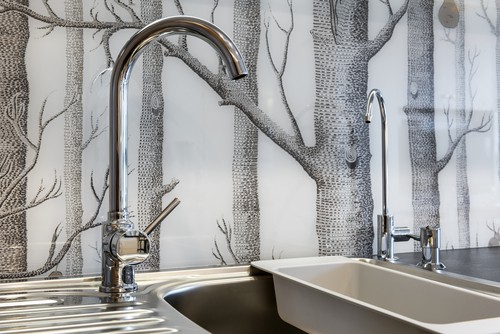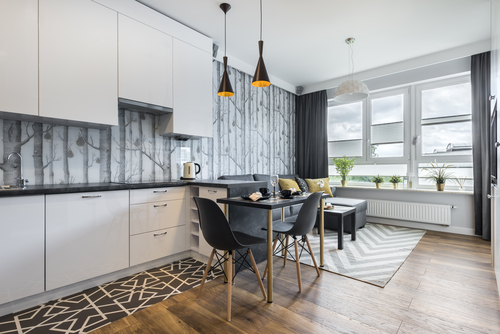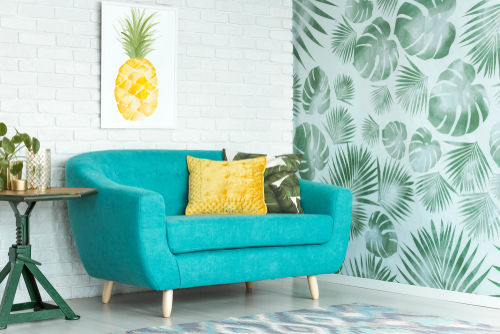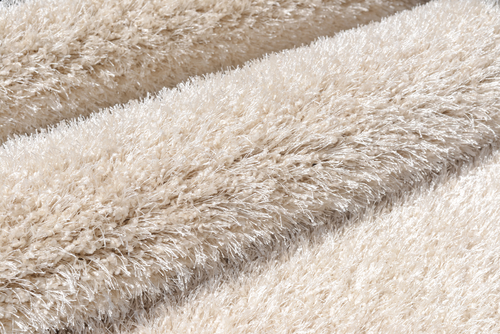
How Wallpapers Can Enhance The Beauty of Your Home
November 9, 2019
Benefits of Wallpaper and How to Keep it Clean
November 9, 2019How to Find The Best Wallpapers for Your Home

Once you have decided to go for wallpaper in your bid to give a new look to the walls in your home, the problem to find the perfect wallpaper begins. And, looking at the seemingly endless options available, this is not an easy task. But unlike a new coat of paint, wallpaper has immense variety and versatility and you can choose the one that represents your personality and expresses your individuality. There are many types of wallpaper and finding wallpaper of your choice should not be a problem.
Once the selection of the wallpaper is done and you have the rolls in your hand, what next?
A wallpaper expert explains: Once you have made up your mind to use wallpaper in your home, there are certain things that need to be considered.
Room Style
First, you need to decide what style and personality you want to give to a specific room.
If this room going to have a romantic character, the best is elegant damasks and sweet florals, particularly where fine lines in pastel colors are muted.
If it’s casual, beadboard and stucco would work better because of the faux finishes and casual options. You can pair beadboard wallpaper with flowing floral organic designs that give a relaxed, at-home feel.
If it’s contemporary (or fashion-forward), try pronounced geometrics in metallic and high gloss accents. Large and bold florals will make a perfect fashion statement.
If it’s traditional, consider stripes and intricate damasks that coordinate seamlessly with traditional décor and furnishings.
Now that you know which style you want to decorate your room and also which wallpaper can go best that particular style, it’s time to figure out how you are going to use the wallpaper. All styles have distinct ways of expressing themselves. Here are a few things to consider:
Cover all Four Walls: A simple stripe in classic design on all four walls horizontally gives a contemporary and fresh look. Large and simple themes will not overwhelm the space but add a style statement.
Feature one Wall: Consider an explosive, bold design to highlight the space, for example, behind a bed or sofa. Designs with a touch of mica, gloss, or metallic will give a glamorous and classy touch.
Wallpaper & Chair Rail: If you have a chair rail in the room that divides the wall, use the unique space it provides to express yourself. For a classic appearance, consider the paintable beadboard wallpaper in the space below the chair rail. On the wall above, you can use a damask or large floral for a trendy look. Another interesting thing could be anchoring the wall with a design such as a dramatic damask below the chair rail, and choose a coordinating color for the wall above. Adding wallpaper in this experimental fashion creates an element of surprise average rooms are not known for.
Bring Ceiling into Focus: Decorate your ceilings with a tin appearance. Cast in a metallic shade, you can easily achieve the Victorian classic tin ceiling look.
Backing Choices
After you have decided about the color, style, and pattern, it’s time to figure out what kind of backing the wallpaper should have. Wallpaper with a non-woven backing can be completely stripped when you want a change in scheme.
Try to find ‘Paste-the-wall’ variety of wallpapers, which have a non-woven backing and the paper that does not deform or expand even when water gets into it. As it can be directly pasted on the wall, it cuts decorating time by half, in contrast to regular wallpapers that need soaking.
Flat or Textured Patterns?
Whether you should choose a flat or a textured design is a matter of personal style. Generally speaking, the textured design gives a casual look to space, whereas flat designs will make the wall look more refined.
Textured wallpapers create dimensions and do a great job in covering up imperfections. Some textured wallpapers can be painted to achieve a monochromatic look. The actual designs of textured wallpapers are often less detailed, compared to flat patterns.
With flat wallpapers, the advantage is you have the choices of fine detailing in the patterns, and accents such as metallic, mica, or gloss. If your walls have some imperfections, and you prefer flat wallpaper, you can use a wall liner for the base layer that will give you the extra coverage you need.
How Much Wallpaper to Purchase
You can follow this guide:
• Take a measurement of all the walls in feet; multiply height and width
• Add measurements of all the walls and work out how many sq ft of wallpaper you to cover all the walls
• Deduct the area covered by windows, doors, or any large openings
• Buy enough rolls up wallpaper that it does not fall shot
• It is good to buy one roll extra than you order it in the middle of the work
The spare roll can be used for an offset and also if you make a mistake when pasting the wallpapers.
You may come across industry terms like double-roll and single-roll. However, if you know how much square feet of roll you need, you can always check the label on the rolls and see if they are going to cover the entire that you have.
Where to Buy Wallpaper
You can check out your local store that deals in such products. Usually, they have design books that can help you select the wallpaper you need. Alternatively, you can always check out online retailers who offer such products. Here is a brief list of some online retailers of quality wallpapers:
Ballard Designs
Anthropologie
Graham and Brown
Ferm Living
Tempaper
Design Public
Conclusion
Wallpapering is a great option to lend a new life and personality to your walls and the space that they create. However, it is not always as easy as it sounds to go through the entire process and see the inside of your home coming alive in an all-new look, sporting gloss, and metallic accent, having textured patterns all over the place, bold flowing florals making a subtle style statement that your interiors always deserved. There are many types of wallpaper and finding wallpaper of your choice should be an issue at all. The tips given here should make wallpapering a pleasant experience for you.



